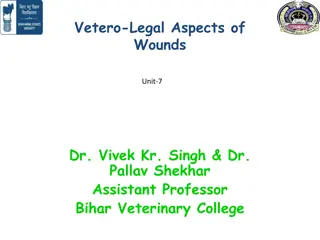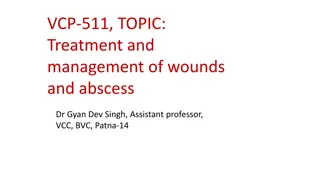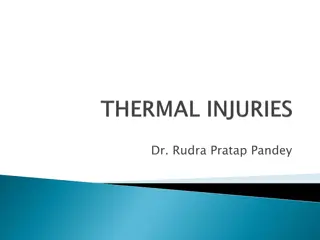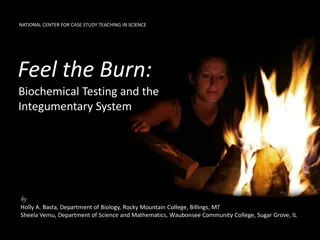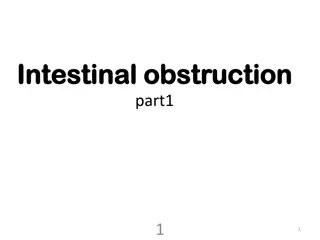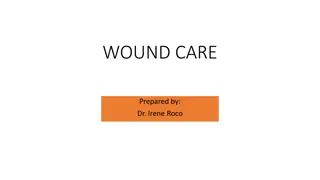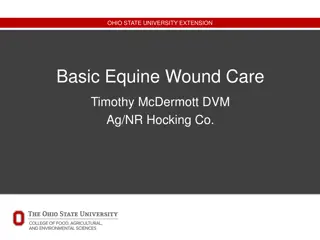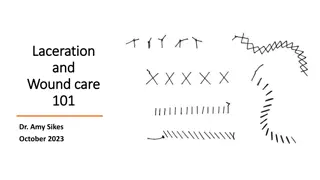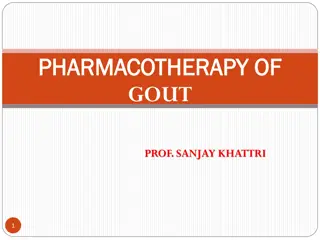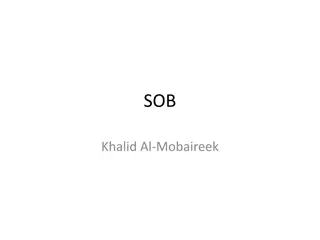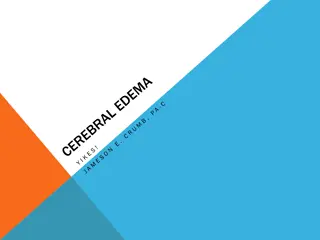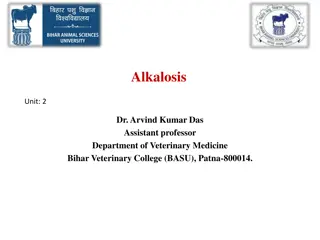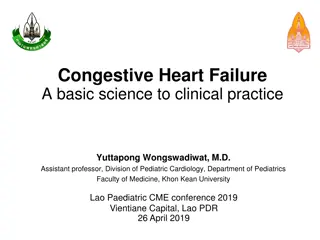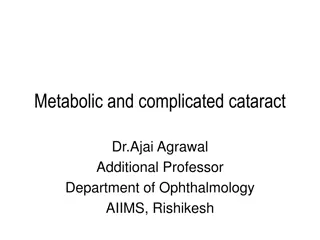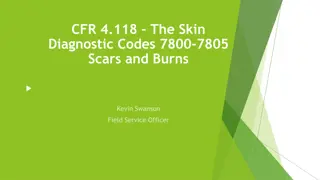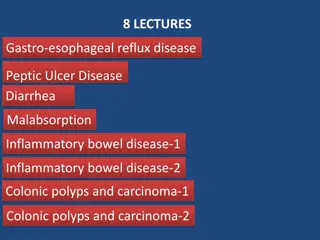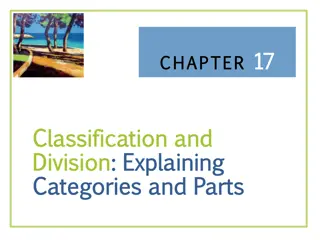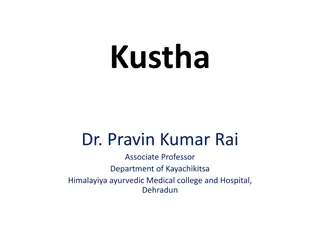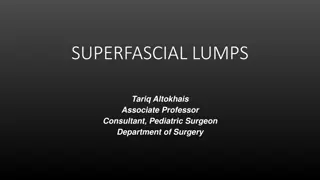Understanding Burn Wounds: Pathophysiology and Classification
Burn injuries, such as burns and scalds, are complex inflammatory conditions caused by exposure to heat, chemicals, or electricity. This article delves into the pathophysiology of burn wounds, explaining how tissue damage occurs and the classification of burn depths based on layers of skin affected. It covers the effects of heat energy, vascular changes, inflammatory responses, and complications like oedema and carbon monoxide poisoning. Understanding these processes is crucial for effective management of burn injuries.
Download Presentation

Please find below an Image/Link to download the presentation.
The content on the website is provided AS IS for your information and personal use only. It may not be sold, licensed, or shared on other websites without obtaining consent from the author. Download presentation by click this link. If you encounter any issues during the download, it is possible that the publisher has removed the file from their server.
E N D
Presentation Transcript
BURns Gulshan Kumar MVSc, PhD
Burns are complex inflammatory or gangrenous lesions due to exposure of live tissue to dry or moist heat, chemicals and electricity. Scalds are burns caused by hot liquids or steam
Classification Superficial (involving epidermis) First degree Partial thickness (involving dermis) Superficial dermal (Second degree) blood vessels and nociceptors Deep dermal (Third degree) Pressure receptors Full thickness: (Fourth degree) subcutis, fascia, muscle, even bone, eschar formation
Pathophysiology of burn wounds Exposure to 44 C for 5 minutes can result full thickness burns Exposure to 70 C for about a second can result full thickness burns Injury will occur when the heat energy is applied at a rate that exceeds the tissue s ability to absorb and dissipate it A transition area separates the completely damaged tissue from the un-injured healthy tissue. Heat results in denaturation of the cellular proteins and coagulation of blood vessels.
Pathophysiology of burn wounds Adjacent to the injured tissue, is the zone of stasis i.e. reduced blood flow, intravascular sludging and potentially reversible tissue damage. If the insult continues-> irreversible damage may occur. In this stasis zone, some vessels are completely thrombosed. Others may be patent but with endothelial cell damage. Massive inflammatory reaction in response to the tissue injury results massive dilatation of vessels, increased permeability and extravasation of protein rich fluid into the extravascular spaces.
Pathophysiology of burn wounds Massive oedema, the pressure of which may compress blood vessels hampering the microcirculation, tissue anoxia and necrosis. Since the circulating fluid has been shifted to extravascular fluid the animal is in shock. Severe hypoproteinaemia. Hence further oedema which aggravates the hypoproteinaemia
Pathophysiology of burn wounds Carbon monoxide poisoning. If inflicted by flames, there may be accompanying inhalation injuries Inhalation of hot gases and smoke.. Oedema of oro-pharynx and larynx leading to upper airway obstruction and tracheal, bronchial and pulmonary oedema .pulmonary failure
Pathophysiology of burn wounds Hypovolaemia leads to increased haematocrit and increased viscosity, hence renal and hepatic damage. Low protein synthesis, low immunity, More chances of infection Decreased splanchnic perfusion leads to compromised intestinal mucosal barrier function, allowing bacterial translocation and absorption of endotoxins sometimes may lead to ulceration of duodenum (curling ulcers)
Pathophysiology of burn wounds Massive scars when burn wounds heal
Assessment of burn wounds Extent of injury is usually reported as the %age of surface area involved, which is: Surface area = 0.1 x weight / Modified rule of 9 Each forelimb =9% (9 x 2=18%) Each hind limb =18% (18 x 2 =36%) Head & neck = 9% Thorax= Ventral 9%, Dorsal 9% (total= 18%) Abdomen= Ventral 9%, Dorsal 9% (total= 18%) Groin, perineum, tail = 1%
First Aid Immediate cooling of the burnt area (not freezing-ice packs may damage actually) Remove the aetiologic agent, If aetiology is chemicals, irrigate with large volumes of clean water Prevent infection
Management Initial care: Morphine sulphate (10 mg total dose for dog and 60 mg total dose for large animals) or Methadone at the rate of 0.25 mg per kg body weight for pain. OR OTHER NSAIDS Emesis can be controlled by phenothiazine derivatives. Sedatives, narcotics are contraindicated. Prophylaxis against tetanus should be done with anti tetanus serum or penicillin.
Management Respiratory involvement, if present, can be judged by burnt lips and nose, deep red oral and pharyngeal mucosae and cough. Immediate intubation or tracheostomy should be performed and the lungs be oxygenated with 40-60% oxygen. Intravenous line should be established immediately, preferably canulation should be done (canula should not be left for more than 7 days).
Management Choice of fluids: In full thickness burns saline bicarbonate, Ringer s lactate, plasma or whole blood should be considered. Rate and dose of infusion: Plasma/blood (ml) = body wt. x % burns x 1 ml - for 24 hrs. Ringer s lactate (ml) = body wt. x % burns x 1 ml- for24 hrs. 5% dextrose saline = 20-30 ml/ kg body wt. as maintenance. *Half of the fluid should be administered in first 8 hours and the remaining half over 16 hours.
Management Efforts should also be made for prevention of thrombosis and consequent ischaemia (anticoagulants like heparin). Release incisions may be required in case of constricting burns. Antiseptic ointments like silver sulphadiazine (1% cream), furacillin 1:5000) costly for animals Carron oil linseed/coconut oil + lime water topically Non adherent dressings
Management Supportive Protein rich diet, enhance anabolism Vit. A, B, C and Zn are advised If burns involve genitalia, catheterise.
Frost bite Frost bite results due to exposure of extremities to extremely low temperatures, e.g. in icy mud, The damage thus caused is either to the supporting tissue or primary circulation or both. Extremities show oedema and bright red dyscolouration which is at its maximum after 24 hours of thawing.
Frost bite Ischaemia and mummification (dry gangrene) followed after 4-5 hours in cases of severe damage, Shrunken tissue hang with the body for 30-40 days following which it may separate spontaneously. Restoration towards normalcy after 72 hours is a favourable prognostic sign. Infection may cause moist gangrene to form.
Frost bite Treatment Rapid rewarming at 108 F is the most acceptable method because following this endothelium of blood vessels remains attached to the intima and starts proliferating after the third day. Unless the infection is apparent no local treatment is indicated. Amputation if indicated should be postponed till dry gangrene has a clear-cut separation from the normal healthy tissue. Local anaesthesia, blockade and parenteral analgesics and antibiotics are indicated. Infection may cause moist gangrene to form.


